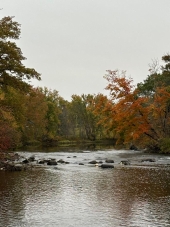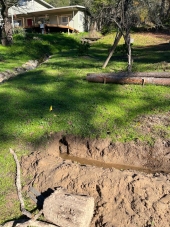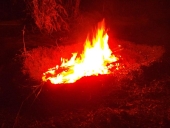I think you are looking in the right direction. I would hot compost the horse manure first for weed reduction, and to make the N more stable, with arborist woodchips, straw, and/or your hay and various weeds. Look up Dr. Elaine Ingham's composting recipes for more info. I would loosen the clay with a broadfork or digging fork, add a layer of sticks and then add the finished (not hot anymore) compost. Daikon is a good choice, but diversity is always better for soil life. Nitrogen fixators will be suppressed by the N in the horse manure, so they could be redundant together if resources are scarce. I like wild bird seed as a filler for a cheap bulk soil building mix, as birds will bring their own microbes and nutrients to the party. Locally native wildflowers are also a good addition if seed is available, but would probably not benefit from horse manure much. Horse manure is good for green growth, and can be much less helpful for flowers and fruit.








